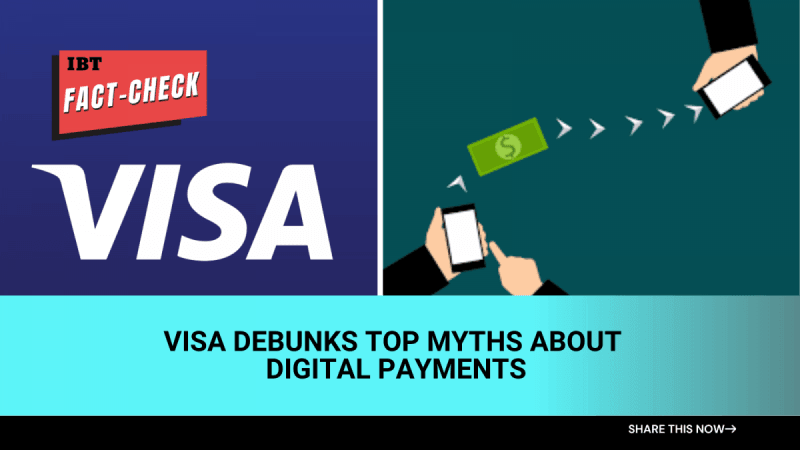![[Representational image] Transaction](https://data1.ibtimes.co.in/en/full/634581/transaction.jpg?h=450&l=50&t=40)
Digital frauds have become quite common these days, with shocking incidents coming to light every other day. As fraudsters employ unique and new ways to scam unsuspecting users, there are some common misconceptions about digital payments that users widely believe. These burgeoning scams are a result of rapid adoption of digital payments.
According to RBI, the internationalisation of the unified payments interface (UPI) is progressing rapidly, as India emerges as a world leader in leveraging digital technologies for transformative change. The UPI hit a milestone of 16.6 billion transactions in a month in October, with improvements in its capabilities like successful instant debit reversals at 86 per cent (77 per cent in the same month last year).
As the world observed Fraud Awareness Week from November 17 to 23, the global digital payments leader, Visa has busted some of the biggest myths.
The claim
Here are the top five misconceptions about digital payments:
- Payment apps store sensitive payment credential information on your phone.
- Strong passwords alone can fully secure transactions.
- Contactless payment methods are highly prone to fraud.
- QR codes are easily hackable and unsafe for digital transactions.
- Digital wallets are less secure than traditional bank transactions.
Fact check

Visa has taken a proactive step to address widespread myths surrounding the security of digital payments. As the popularity of digital transactions surges, misconceptions often lead to unwarranted skepticism. Here are the myths about digital payments that Visa has debunked:
Myth 1: Payment apps store sensitive credentials on user devices.
Fact: Modern payment systems, including Visa, utilize advanced security measures like tokenization and end-to-end encryption, ensuring sensitive data is never stored on devices.
Myth 2: Strong passwords are sufficient to secure transactions.
Fact: While strong passwords are essential, multi-factor authentication—such as combining passwords with OTPs or biometric verification—provides enhanced security.
Myth 3: Contactless payments are prone to fraud.
Fact: Contactless transactions use highly secure encryption and Near Field Communication (NFC) technology. The short-range transmission reduces interception risks, making them safe.
Myth 4: QR codes are hackable and unsafe.
Fact: QR codes are secure when scanned from trusted sources. Users must avoid sharing passwords or personal information via unverified links associated with QR codes.
Myth 5: Digital wallets are less secure than traditional banking.
Fact: Digital wallets often offer extra layers of protection, such as tokenization, biometric authentication, and device-level encryption, enhancing their safety.
Hence, the message is clear: digital payments are secure when used responsibly and through trusted platforms.









![Varun Dhawan trolled for deleting his LinkedIn account 4 days after joining [Reactions]](https://data1.ibtimes.co.in/en/full/806793/varun-dhawan-trolled-deleting-his-linkedin-account-4-days-after-joining-reactions.jpg?w=220&h=138)






